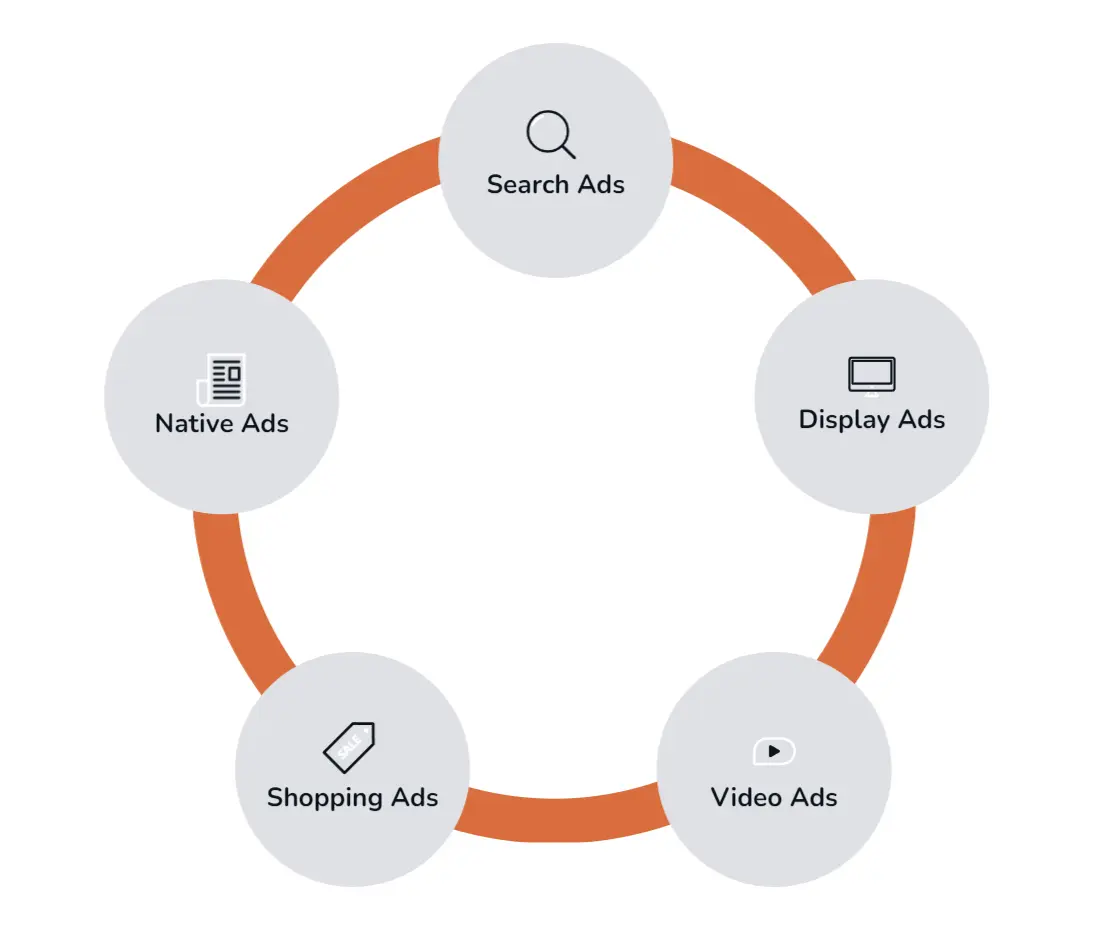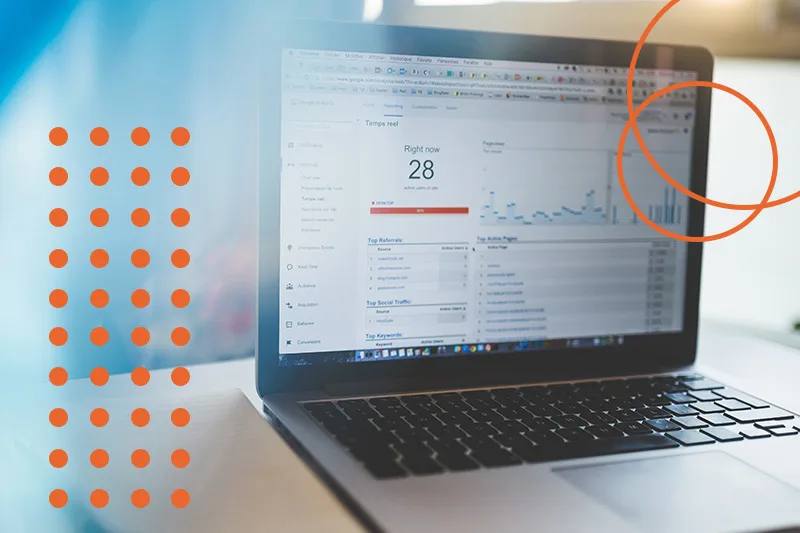Among the many strategies available, Pay-Per-Click (PPC) advertising stands out as one of the most effective ways to drive instant traffic to your website and capture valuable leads. With PPC, businesses can bid for ad placements and reach their target audience in real time, delivering quick and measurable results.
In this article, we’ll explore how PPC works for lead generation, the different types of PPC campaigns, and proven strategies for optimizing your campaigns to maximize lead generation success.
What is Pay-Per-Click (PPC) Advertising for Lead Generation?
PPC advertising is a model where businesses pay for each click their ads receive. For lead generation, PPC enables you to target specific demographics, locations, and behaviors, ensuring your ads are seen by potential customers who are actively searching for the products or services you offer.
How does PPC work for lead generation?
PPC campaigns for lead generation focus on capturing information from prospective customers, such as their name, email address, and other contact details. This is often done through specialized landing pages with lead capture forms. By strategically bidding on relevant keywords, businesses can drive targeted traffic to these pages and convert visitors into leads.
Why is PPC effective for lead generation?
PPC is particularly effective for lead generation because it allows businesses to reach highly targeted audiences quickly. With PPC, you can control your budget, choose exactly who sees your ads, and track the performance of your campaigns in real time. This flexibility makes it a valuable tool for businesses of all sizes looking to generate leads efficiently.
Types of PPC Lead Generation Campaigns
When it comes to generating leads through PPC, there are several types of ads that businesses can leverage. Each ad type has its own strengths and use cases, making it important to choose the one that aligns best with your campaign goals.

Search Ads
Search ads are the most common type of PPC ads. They appear at the top of search engine results pages (SERPs) when users search for specific keywords. These ads are text-based and ideal for capturing users who are actively searching for products or services related to your business. Search ads are effective for driving high-intent traffic and generating leads directly from search queries.
Display Ads
Display ads are visually-driven ads that appear on websites across a display network, such as Google Display Network. They typically include images, graphics, or videos alongside text and are designed to grab attention. Display ads are great for increasing brand awareness and capturing leads through compelling visuals and calls-to-action.
Video Ads
Video ads are engaging, visually rich ads that can be displayed on video platforms like YouTube or as part of display ad networks. They are ideal for storytelling, showcasing product demos, or providing valuable insights in an engaging format. Video ads are effective for capturing leads through strong messaging and clear CTAs.
Product Listing Ads (Shopping Ads)
Product Listing Ads (PLAs), also known as Shopping Ads, display product images, prices, and other relevant details directly on the SERPs. They are highly effective for eCommerce businesses looking to drive product-specific leads. These ads appeal to users who are further down the purchasing funnel and searching for specific products.
Sponsored Content and Native Ads
Sponsored content or native ads blend seamlessly into the platform’s feed or content layout, providing a non-disruptive advertising experience. They are common on social media platforms and news websites. These ads are effective for capturing leads in a way that feels more organic and aligns with the user experience.
+1 Remarketing Ads
Remarketing ads target users who have previously visited your website or interacted with your content but did not convert. These ads can be displayed in search results, on websites, or on social media. Remarketing ads are great for nurturing potential leads and encouraging them to complete the desired action.
10 Expert Tips to Optimize PPC for Lead Generation
Now that we’ve covered the basics, let’s see some actionable tips to help you get the most out of your PPC lead generation campaigns.
1. Create customized landing pages
Using landing pages specifically designed for your PPC campaigns is essential for converting clicks into leads. Make sure the page matches the message of your ad and includes a clear call-to-action (CTA) to encourage conversions. Read more about website optimization in our dedicated article.
2. Target audience segmentation
To improve the quality of your leads, segment your target audience based on factors like demographics, location, and behavior. By creating more personalized ads, you can increase the likelihood of conversions.
3. Focus on valuable offers in your ad copy
Your ad copy should highlight a valuable offer, such as a free consultation or a downloadable resource. By giving potential leads something of value, you increase the chances of them clicking on your ad and filling out your lead form.
4. Use “money” keywords
Focus on keywords that signal high intent, often referred to as “money” keywords. These are terms used by people who are ready to make a purchase or take a specific action, such as “buy,” “best,” or “get a quote.”
5. Track campaign performance and optimize regularly
Regularly monitor the performance of your campaigns by tracking key metrics like cost-per-click (CPC), conversion rate, and return on ad spend (ROAS). Use this data to make adjustments and optimize for better results.
6. A/B test your campaigns
A/B testing allows you to experiment with different ad variations to see which performs best. Test different headlines, descriptions, CTAs, and images to discover what resonates most with your target audience.
7. Choose long-tail keywords for better targeting
Long-tail keywords are longer, more specific keyword phrases that tend to have lower search volume but higher conversion rates. By using long-tail keywords, you can attract more qualified leads who are closer to making a decision.
8. Use remarketing for lead nurturing
Remarketing allows you to re-engage users who have interacted with your website or ads but haven’t converted yet. This strategy helps keep your business top-of-mind and can lead to higher conversion rates over time.
9. Leverage CRM tools for lead management
Integrating a Customer Relationship Management (CRM) tool with your PPC campaigns enables you to track, manage, and nurture leads through the sales funnel. This ensures that no leads slip through the cracks.
10. Conduct regular campaign optimizations
PPC campaigns require continuous optimization to perform at their best. Regularly review your ad performance, make necessary adjustments, and experiment with new strategies to keep improving your results.
PPC Lead Quality: How to Measure and Optimize
Measuring the quality of your leads is just as important as generating them. A high volume of leads is great, but if they aren’t qualified, your sales team may struggle to convert them into customers.
Tracking your PPC lead generation campaign
To ensure you’re attracting quality leads, track key performance indicators (KPIs) such as conversion rate, cost per lead (CPL), and lead-to-customer ratio. This data will help you identify areas for improvement in your campaigns.
| Metric | Definition | Ideal Range | Evaluation |
|---|---|---|---|
| Conversion Rate (%) | The percentage of visitors who complete a desired action (e.g., filling out a form) out of the total visitors from a PPC campaign. | 3-5% or higher | Indicates the effectiveness of PPC campaigns in turning clicks into leads. A higher conversion rate means your ad, landing page, and offer resonate well. |
| Cost Per Lead (CPL) ($) | The total cost spent on acquiring a lead through PPC divided by the number of leads generated. | $10 – $100 (varies by industry) | Helps assess the cost-efficiency of generating a lead. A lower CPL indicates better ad targeting and campaign efficiency. |
| Lead-to-Customer Ratio (%) | The percentage of leads that convert into paying customers. | 10-25% or higher | Shows the quality of leads. A higher ratio means you’re attracting more qualified leads likely to become customers. |
Lead scoring: What it is and how to do it
Lead scoring is the process of assigning values to leads based on their likelihood to convert. By using factors like behavior, engagement, and demographics, you can prioritize leads and focus on the most promising opportunities.
Benefits of Using PPC for Lead Generation
PPC advertising offers several benefits for businesses looking to generate leads quickly and efficiently. Let’s take a closer look at some of these advantages.
Instant visibility and fast results
One of the biggest benefits of PPC is the ability to get instant visibility on search engines and social media platforms. Unlike SEO, which takes time to build, PPC delivers results almost immediately.
Targeted reach and control over budget
With PPC, you can precisely target the audience you want to reach based on location, age, interests, and more. Additionally, you have full control over your budget and can adjust your spending as needed.
Scalability and flexibility
PPC campaigns are highly scalable, meaning you can increase your ad spend to generate more leads as your business grows. Additionally, PPC is flexible and can be adapted to different goals, from lead generation to brand awareness.
Top PPC Platforms for Lead Generation
Choosing the right platform is crucial for the success of your PPC lead generation campaigns. Here’s a breakdown of the top platforms to consider.
| Feature/Aspect | Google Ads | Bing Ads | Meta Ads (Facebook & Instagram) | LinkedIn Ads |
|---|---|---|---|---|
| Audience Reach | Largest search engine, extensive global reach | Moderate reach (Microsoft & Yahoo networks) | High reach, strong presence on social media | Niche reach, primarily professionals and businesses |
| Targeting Options | Extensive (keywords, demographics, location) | Similar to Google, slightly less detailed | Advanced targeting (demographics, interests, behaviors) | Professional targeting (job title, company, industry, etc.) |
| Ad Formats | Search, Display, Shopping, Video, Local, App | Search, Display, Shopping | Image, Video, Carousel, Stories, Lead Ads | Sponsored Content, InMail, Text Ads |
| Cost-Per-Click (CPC) | Generally higher due to competition | Generally lower CPC, less competition | Variable, competitive in popular segments | Typically higher CPC, focused on professionals |
| Ad Budget | Flexible, suitable for large and small budgets | Flexible, good for small to medium budgets | Flexible, good for all budget sizes | Higher entry cost, suitable for B2B-focused campaigns |
| Conversion Rate | High, depending on industry and keywords | Similar to Google, varies by industry | High for B2C, lower for B2B | High for B2B, especially in professional services |
| Best For | B2B & B2C, eCommerce, Lead Generation | B2B & B2C, smaller businesses, lower budgets | B2C, consumer-oriented brands, awareness campaigns | B2B, professional services, corporate branding |
| Demographics | All demographics, wide variety of users | Older demographic, users mostly in developed countries | Younger to mid-age demographic, diverse audience | Professionals, senior executives, job seekers |
| Unique Features | Google Search Network, detailed keyword targeting, Shopping ads | Microsoft audience network, lower CPCs | Visual storytelling, diverse ad formats | Professional network insights, InMail for direct outreach |
PPC Campaign Optimization: Key Tactics
Once your PPC campaigns are live, it’s important to optimize them regularly to ensure you’re getting the best possible results. Here are some key tactics to keep in mind.
Use A/B testing for continual improvements
A/B testing is crucial for discovering what works best in your campaigns. By testing different versions of your ads and landing pages, you can refine your strategy and increase your conversion rates.
Optimize landing pages for lead conversion
Your landing page is where conversions happen, so it’s essential to make sure it’s optimized for lead generation. This includes having a clear CTA, a clean design, and relevant messaging that matches your ad.
Utilize automation tools for efficiency
Automation tools, such as Google Ads’ Smart Bidding and SaveMyLeads, can help streamline your PPC campaigns and optimize performance. These tools allow you to focus on strategy while automating the more repetitive tasks.
Final Thoughts on PPC for Lead Generation
Pay-Per-Click advertising is one of the most efficient ways to generate leads for your business. By following the best practices outlined in this article, you can create and optimize campaigns that attract high-quality leads quickly and effectively. Remember, PPC success requires ongoing effort, including regular optimization, A/B testing, and careful tracking of your results. With the right strategy in place, PPC can become a powerful tool in your lead generation toolkit.


